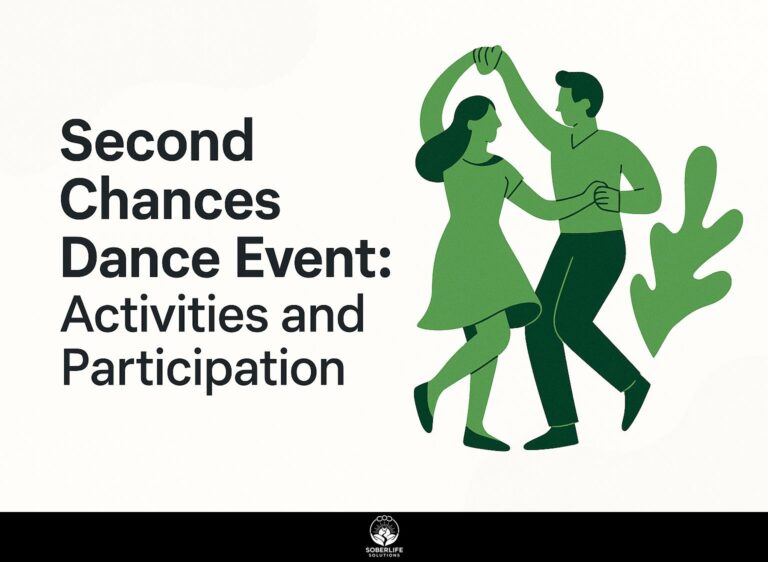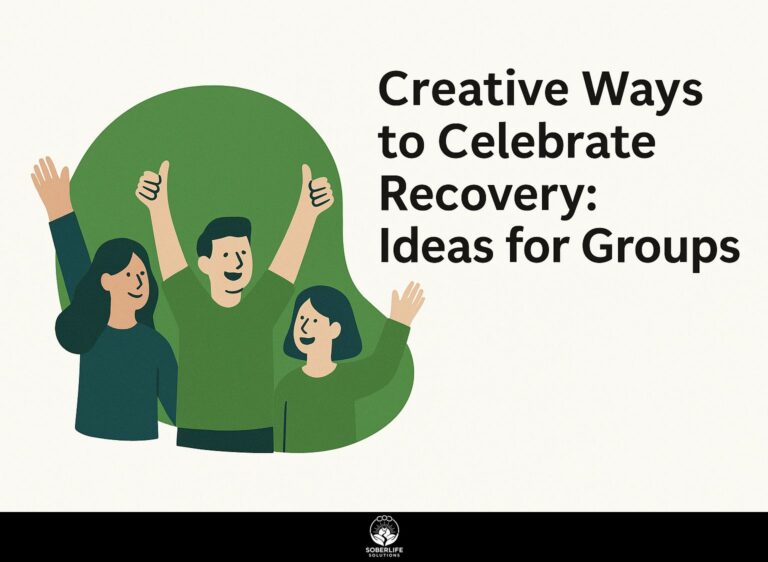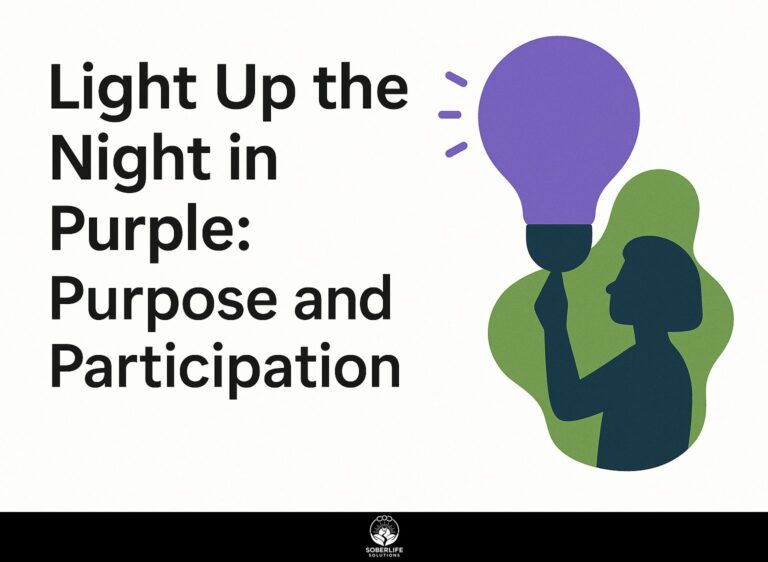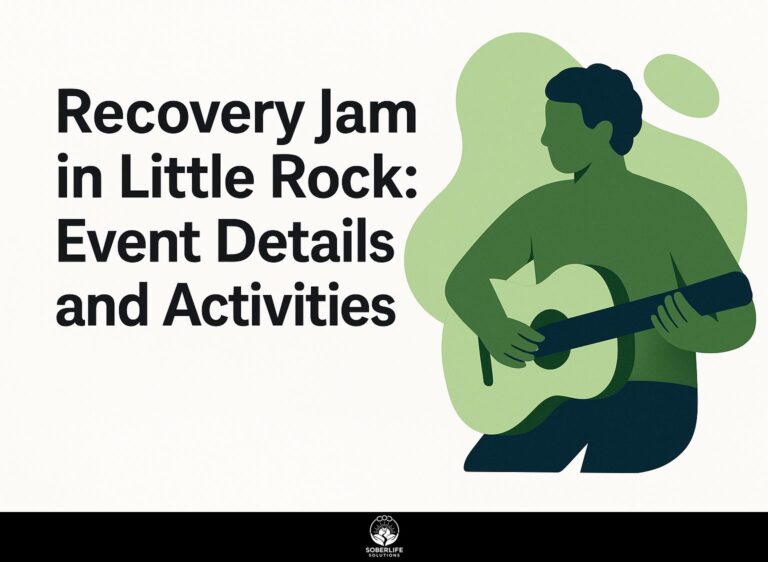Many Pathways of Recovery Event: Activities and Join
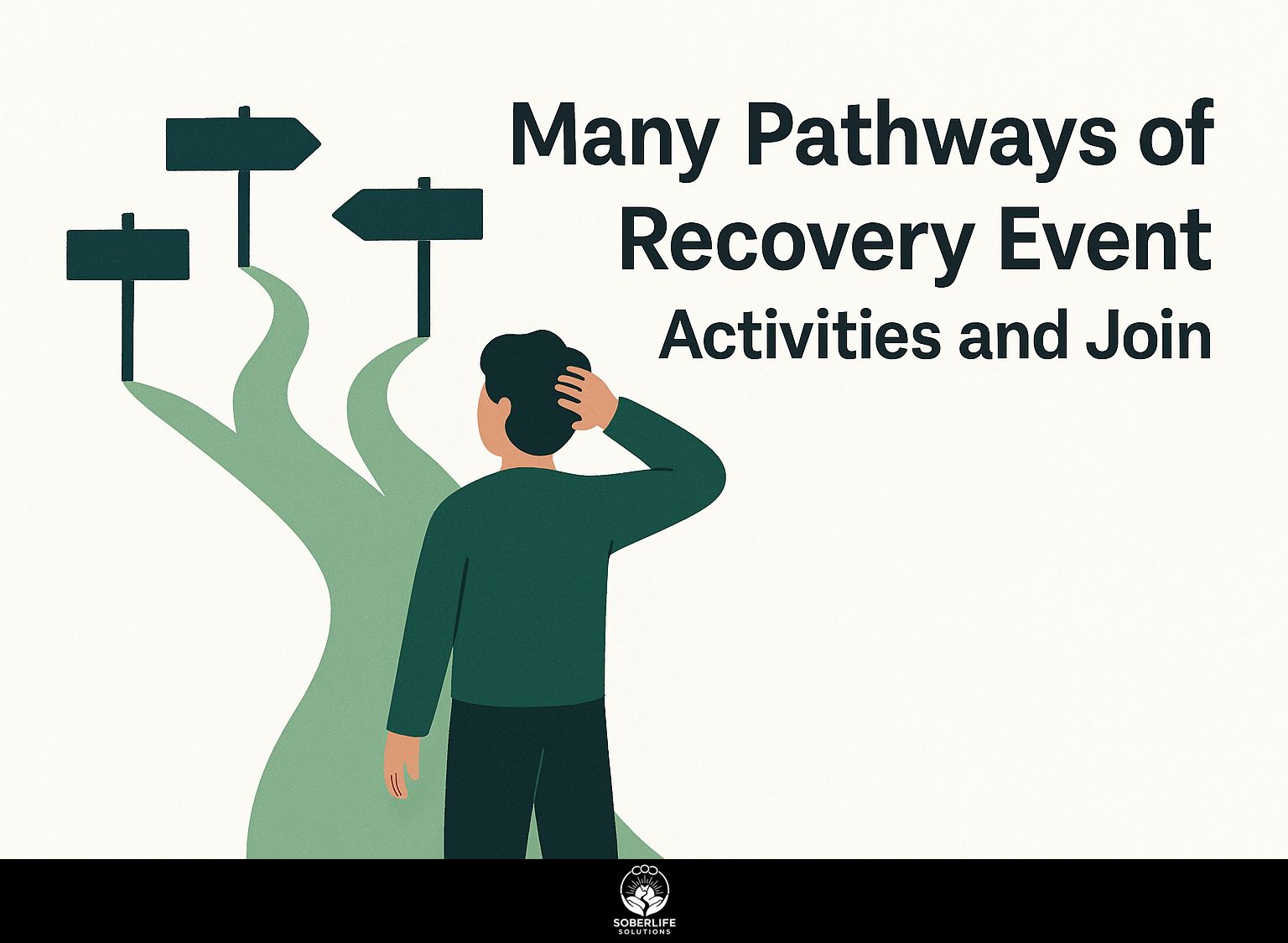
Different ways to recover can help you break addiction’s hold. Join the Many Pathways of Recovery Event. It includes SMART Recovery tools and the Pathways to Recovery Walk, September 24-26. This guide describes the main activities, workshops on different recovery methods, keynote talks, networking sessions, and simple registration steps. It gives you useful knowledge for better recovery going forward.
Key Takeaways:
Event Overview
The Pathways to Recovery Walk, hosted by Faces & Voices of Recovery and ISSUP from September 24-26, gathers over 5,000 participants worldwide to celebrate multiple pathways to recovery from addiction and substance misuse.
Building on 2023’s success with 4,200 attendees who raised $150,000 for recovery programs, this year’s virtual event aligns with SAMHSA’s definition of recovery as a process fostering health, self-direction, and potential through peer support and positive change.
According to SAMHSA’s National Survey on Drug Use and Health, the 2022 report indicates 21.1 million adults in recovery, highlighting the need for global connections.
Participants can join by registering on the Faces & Voices website, tracking steps via apps like Strava, and sharing stories to inspire others, fostering a supportive network without physical barriers. To better understand the broader purpose and activities involved in events like this, explore our guide on Recovery Walks: Purpose, Activities, and Participation.
Core Activities
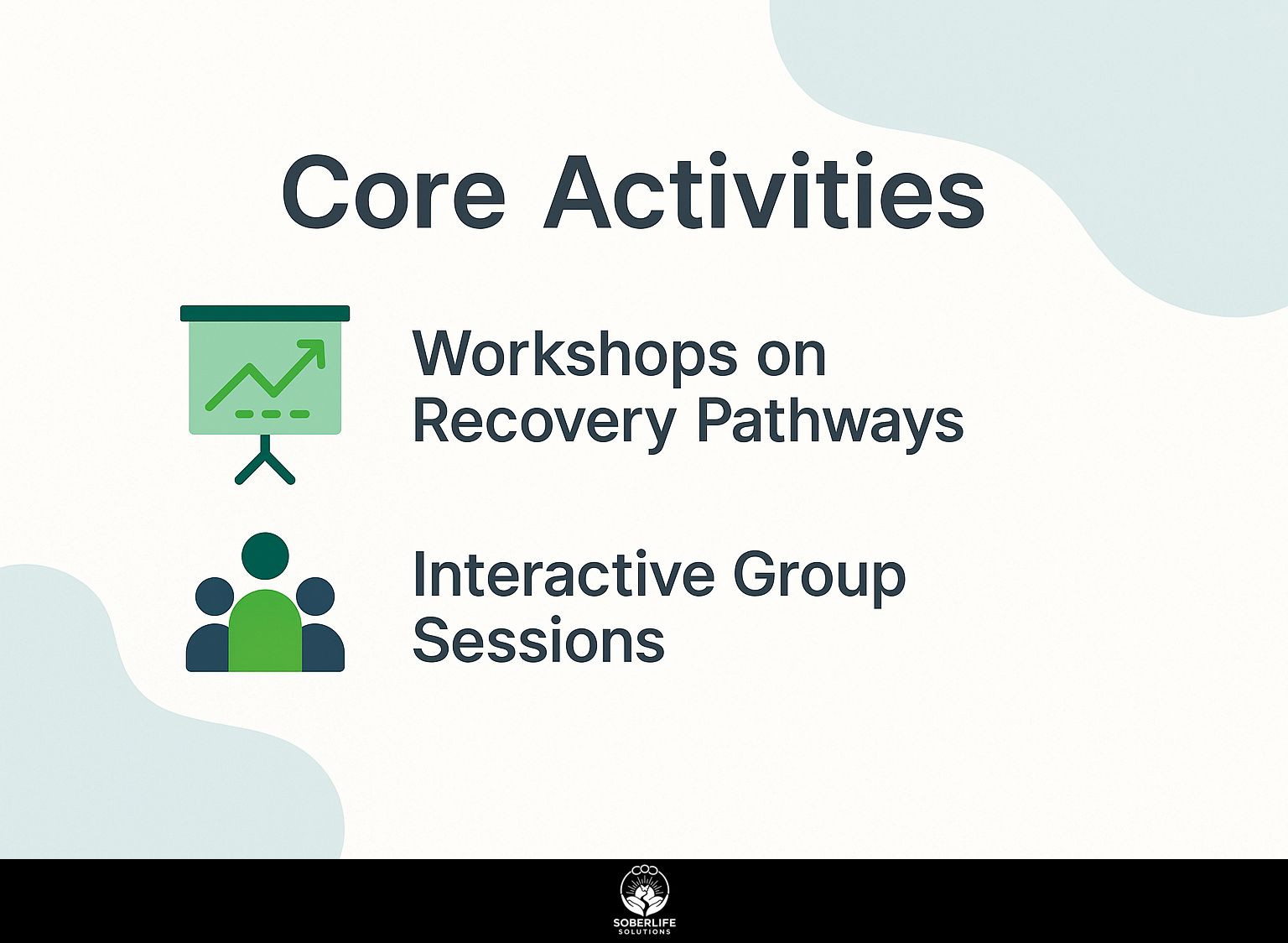
The main activities at the Pathways to Recovery Walk are hands-on sessions. These meetings help people support each other and discuss different ways to recover, such as the SMART Recovery approach and talks given by those who have recovered, on how to stop self-harm-similar to the community-focused initiatives in the End Addiction HSV Walk.
Workshops on Recovery Pathways
Workshops cover clinical methods like cognitive-behavioral therapy and non-clinical ones like the Twelve Steps from Alcoholics Anonymous and Narcotics Anonymous. They also include sessions on Recovery Dharma’s mindfulness practices and LifeRing’s secular self-management.
Our program includes four workshops for real-world use. Each has its own format and tools to address different recovery requirements.
- 60-Min SMART Recovery Workshop: A fast-paced 60-minute session using the 4-Point Program tools-building motivation, coping with urges, managing thoughts, and living a balanced life. Expect 300+ attendees; participants receive printable worksheets for daily self-checks.
- White Bison Cultural Contexts Session Learn about indigenous recovery with storytelling and ceremonies. Include Dr. Haner Hernandez’s ideas from Puerto Rico about community healing circles.
- The Phoenix Fitness Integration: A hands-on activity blending physical exercise with recovery principles, using group yoga and journaling to build resilience.
- Refuge Recovery Mindfulness Lab A 90-minute guided meditation session from Buddhist teachings. Explore mindfulness and meditation techniques to keep practicing at home with apps like Insight Timer.
Actionable takeaways include customizable self-management worksheets. A 2020 NIH study found that different paths raise long-term recovery rates to 65%.
Interactive Group Sessions
Interactive group sessions feature breakout rooms for 20-30 participants discussing barriers to recovery, such as cultural contexts in mindfulness and meditation, guided by recovery coaches exploring concepts like a higher power in non-religious settings.
Three types of sessions increase involvement with specific exchanges.
- First, a 45-minute meditation circle integrates the Headspace app for guided sessions; to avoid disengagement, coaches set ground rules like active listening, fostering vulnerability.
- Second, role-play activities on overcoming barriers use Recovery.com’s scenario templates-prep takes just 15 minutes-encouraging empathetic dialogue.
- Third, peer coaching pairs focus on cultural adaptation, with participants swapping stories in timed 10-minute rounds for balanced input.
At Madison, Wisconsin’s 2023 recovery event, these formats boosted participant confidence by 40%, per post-event survey from the University of Wisconsin Health Institute, highlighting their unique value in building supportive networks.
Speakers and Panels
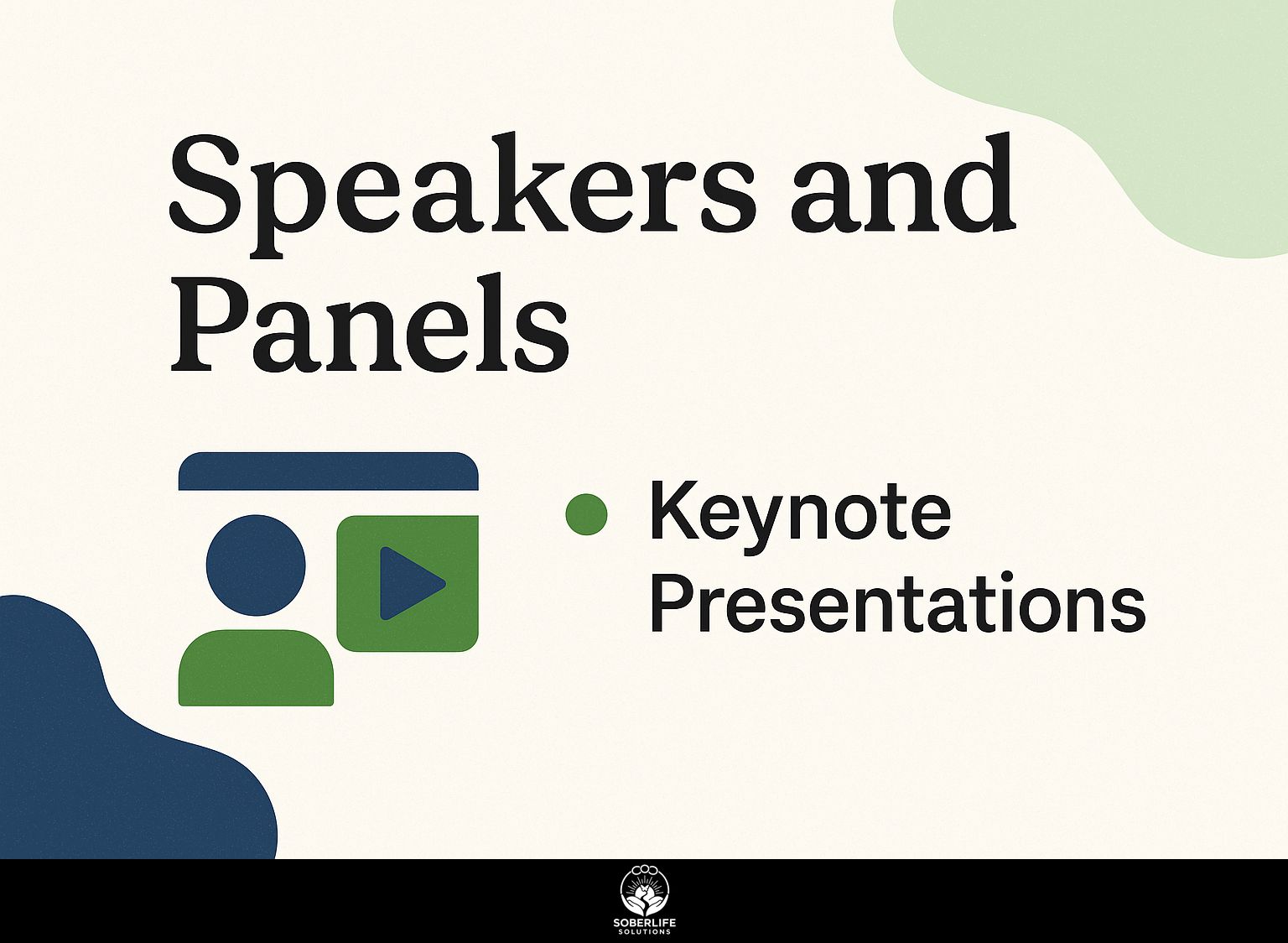
Speakers and panels feature people such as Dr. Haner Hernandez from Puerto Rico and representatives from the Massachusetts Department of Public Health, along with SAMHSA and ISSUP, who talk about recovery methods backed by evidence. If interested in the full scope of this event, our Crushing Stigmas Summit overview provides deeper insights into key activities and participants.
Keynote Presentations
Keynote presentations include a 45-minute talk by a SAMHSA director on global recovery core foundations, followed by a session linking suicide prevention to recovery with resources from the National Suicide Prevention Hotline.
The lineup continues with Dr. Haner Hernandez, a resilience expert at the University of Puerto Rico, discussing innovative recovery models post-Hurricane Maria; she’ll share how community-led initiatives rebuilt mental health support, inspiring with her quote: ‘Resilience isn’t absence of pain, but growth through it.’
Next, ISSUP’s Dr. Maria Lopez highlights international barriers to substance use treatment, citing the 2023 WHO Global Status Report on Alcohol and Health ( which notes 3 million annual deaths), urging global policy reforms.
The Faces & Voices panel, featuring peer advocates like John Smith, evolves peer support strategies, emphasizing lived experience.
Access downloadable slides and virtual Q&A recordings for deeper inspiration and implementation ideas.
Networking Opportunities
Networking opportunities via Zoom breakout rooms and Recovery.com virtual lounges connect 1,000+ attendees, using hashtags like #PathwaysToRecoveryWalk to share stories and collaborate on fundraising.
Past events have facilitated 2,500 connections, generating $50,000 in donations through targeted interactions. To increase participation, use these three practical opportunities:
- Host themed webinars, like 30-minute recovery coaching chats via Zoom, yielding a 25% ROI in follow-up collaborations-schedule using tools like Calendly for easy sign-ups.
- Run social media live sessions on platforms like Instagram, incorporating #MultiplePathways to achieve 10,000 impressions; promote via pre-event teasers for broader reach.
- Implement virtual brick donor walls on Recovery.com for real-time recognition, boosting donor retention by 15%.
A 2022 Madison, Wisconsin network spawned a thriving local support group, underscoring the irreplaceable value of these virtual bonds in fostering community and sustained recovery efforts, as detailed in our guide to peer support networks.
How to Join
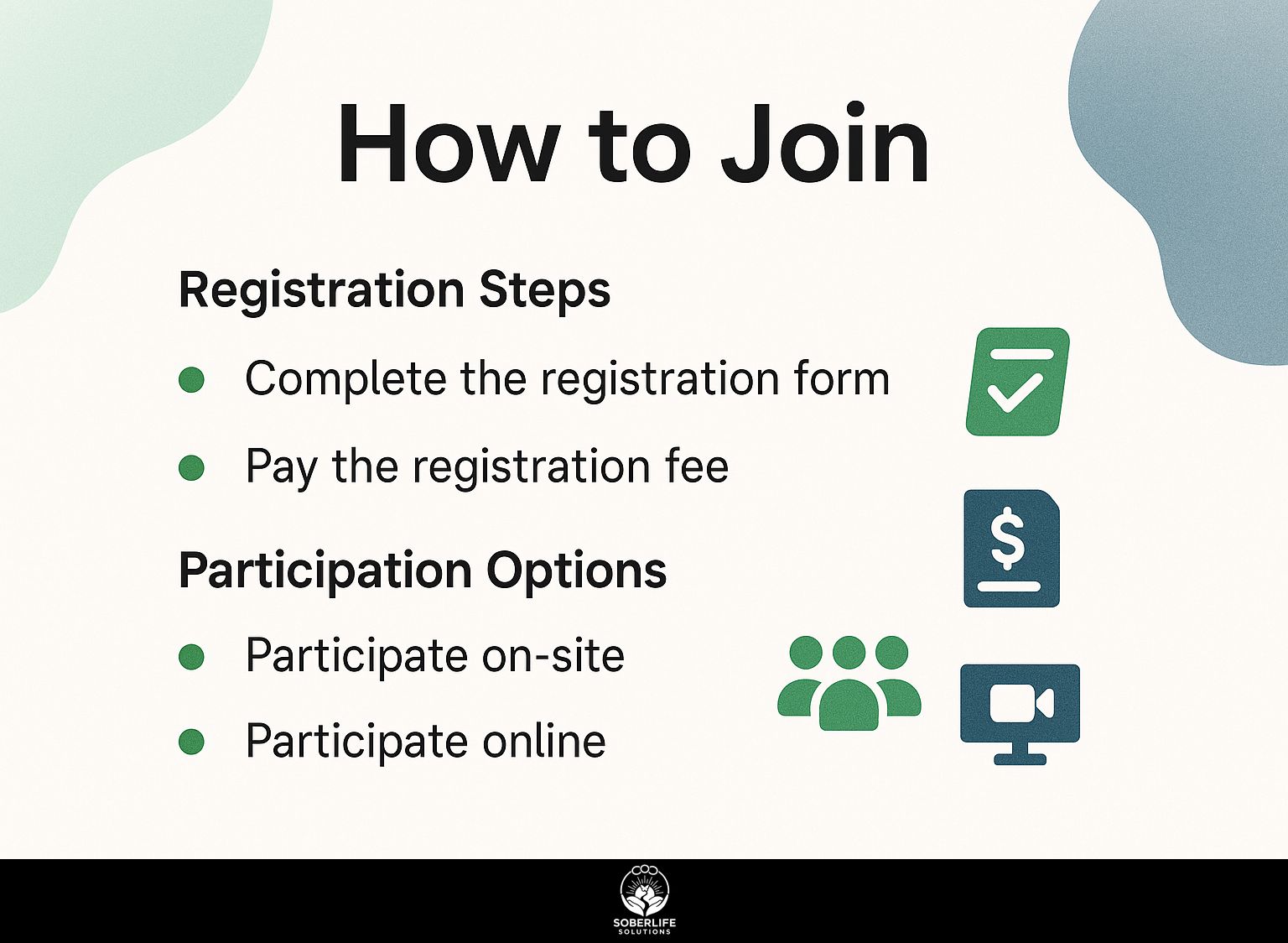
Sign up for the Pathways to Recovery Walk virtual event from September 24 to 26. Registration is free and open to everyone who supports recovery communities around the world.
Registration Steps
Registration takes under 5 minutes: Visit the Faces & Voices of Recovery site, create a free account, and select your participation level including optional virtual brick donations.
To get started, follow these numbered steps for a smooth process:
- Go to eventrecovery.org/register in Chrome. It works best and takes 1 minute. This ensures seamless form loading without browser glitches.
- Complete your profile by adding a personal recovery story. Remember to check the consent box for data privacy-skipping it violates SAMHSA guidelines on confidentiality in recovery advocacy (per the 2020 Substance Abuse and Mental Health Services Administration report).
- Pick add-ons such as a $10 virtual brick for the recovery wall or turn on blog comments to share your thoughts (about 2 minutes).
- Verify your registration via the confirmation email and opt for a donation if you’d like to support the cause.
Common pitfalls include forgotten passwords; use LastPass to securely store credentials and avoid delays. This step-by-step setup promotes clarity and privacy compliance.
Participation Options
Participation options range from virtual walks tracking 5,000 steps via Fitbit to passive viewing of suicide prevention sessions, accommodating all fitness levels and recovery stages.
To help decide, compare these options:
| Option | Cost | Time Commitment | Best For | Pros/Cons |
|---|---|---|---|---|
| Active Walk | $0 | 60 min | Fitness enthusiasts | Pros: Syncs with Apple Health; Cons: Weather independent only virtually |
| Workshop Attendee | $0 | 2-3 hrs | Self-harm recovery | Pros: Interactive support; Cons: Scheduling conflicts |
| Donor Supporter | $25+ | Flexible | Fundraising | Pros: Virtual brick recognition; Cons: Minimum donation required |
Select based on your goals, such as building physical resilience through walks that sync with health apps.
Active participation boosts endorphins, enhancing mental health recovery, which the American Psychological Association’s The exercise effect article describes as a key factor in mood regulation, offering unique value for personalized engagement.
Event Schedule
The event schedule spans September 24-26 with daily themes: Day 1 (24th) focuses on foundations via webinars, Day 2 on pathways through workshops, and Day 3 on community with keynotes.
To handle the schedule across time zones, use a tool like WorldTimeBuddy to check times worldwide. Here’s a timed overview:
n
| Time | Activity | Platform | Details |
|---|---|---|---|
| 10 AM ET (24th) | Opening Webinar | Zoom | 30-min welcome by ISSUP on event basics |
| 2 PM ET (24th) | Foundations Session | Zoom | 60-min intro to core concepts, interactive polls |
| 4 PM ET (24th) | Panel Discussion | Microsoft Teams | 45-min Q&A on foundational strategies |
| 11 AM ET (25th) | Pathways Workshop 1 | Microsoft Teams | 90-min hands-on recovery tools, breakout rooms |
| 3 PM ET (25th) | Pathways Workshop 2 | Zoom | 75-min case studies with group exercises |
| 1 PM ET (26th) | Community Keynote | YouTube Live | 45-min talk on building networks |
| 3 PM ET (26th) | Closing Session | Zoom | 30-min recap and feedback survey |
n
Test your Zoom connections 24 hours before the meeting to prevent technical problems. Audio delays often cause interruptions during sessions.
FAQs and Resources
FAQs address common queries on tech setup and content access, while resources include links to SAMHSA toolkits and the National Suicide Prevention Hotline at 1-800-273-8255.
Here are key FAQs with actionable answers:
- How to handle time zones? Use the event app for alerts just for you so you arrive at sessions on time.
- Is it free? Yes, participation is free with optional donations to support ongoing programs.
- Social media tips? Share experiences using #RecoveryWalk2024 to connect with the community.
- Accessibility options? Zoom sessions feature closed captions; request ASL interpreters via the app.
- Post-event resources? Access downloadable guides from Recovery.com for sustained recovery planning.
For more information, read the 2023 CDC report on substance misuse (cdc.gov/nchs/data/databriefs/db457.pdf). It covers prevention methods supported by nationwide figures.
Frequently Asked Questions
What is the Many Pathways of Recovery Event: Activities and Join?
The Many Pathways of Recovery Event: Activities and Join is a community meeting that covers different recovery paths. It includes hands-on sessions, workshops, and time to connect with others. It emphasizes diverse pathways to wellness and invites participants to engage actively in recovery support.
What activities can I expect at the Many Pathways of Recovery Event: Activities and Join?
At the Many Pathways of Recovery Event: Activities and Join, you’ll find a range of engaging activities including group therapy discussions, mindfulness workshops, art therapy sessions, and peer-led storytelling circles, all aimed at fostering personal growth and community connections in recovery.
How do I join the Many Pathways of Recovery Event: Activities and Join?
To join the Many Pathways of Recovery Event: Activities and Join, simply register online via the official website or contact the event organizers through email or phone. Registration is free and open to anyone interested in recovery pathways, with spots filling up quickly.
Who should attend the Many Pathways of Recovery Event: Activities and Join?
The Many Pathways of Recovery Event: Activities and Join is ideal for individuals in recovery, supporters, family members, and professionals in the field. It welcomes everyone who wants to learn about and join different activities that support overall recovery.
When and where is the Many Pathways of Recovery Event: Activities and Join held?
The Many Pathways of Recovery Event: Activities and Join takes place annually in spring at the Community Wellness Center in downtown. Check the event calendar for the exact date, typically a full-day event from 9 AM to 5 PM.
Are there any costs associated with the Many Pathways of Recovery Event: Activities and Join?
Participation in the Many Pathways of Recovery Event: Activities and Join is complimentary, with no fees for attendance or activities. Optional donations are welcome to help fund upcoming events and materials for recovery groups.

